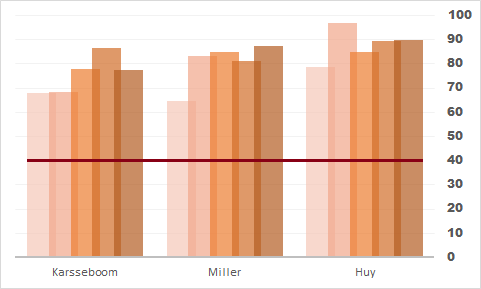Oakland police officer’s $490,000 pay package tops city list for 3rd year in a row

Oakland police officer Malcolm Miller more than quadrupled his $107,627 salary to $489,662 with overtime, benefits and other specialty pays last year — making him Oakland’s highest paid employee for the third year in a row, according to just-released pay data.
Today, Transparent California released previously-unseen 2015 public employee compensation data for the city of Oakland on TransparentCalifornia.com, the state’s largest public sector compensation database. The site now contains 2015 salary data for 391 cities and 44 counties statewide.
Miller’s enduring status as Oakland’s top-paid city worker is mostly due to collecting massive amounts of overtime (OT) pay, as well as cashing in large sums of unused leave. Last year’s $192,108 OT payout suggests a nearly 90 hour average work-week, according to Transparent California’s research director Robert Fellner.
Using historical data from TransparentCalifornia.com, Fellner discovered that Miller, along with colleagues Eric Karsseboom and Huy Nguyen, have received OT payments suggesting average work-weeks of 80, 76 and 88 hours, respectively, over the past five years, as shown in the chart below:
Average hours worked per week for 3 Oakland police officers based on OT, 2011-2015


Fellner warned that, “The public should be concerned that working such an extraordinary amount of hours for years on end is a recipe for disaster, particularly given the life-or-death situations police officers routinely encounter.”
Surprisingly, Oakland’s top OT-earner was a non-safety worker: Oakland civil engineer Kenny Lau’s $257,097’s OT payout was the fourth-highest statewide, behind only 3 Los Angeles firefighters. Statewide, Lau was the only non-safety worker among the top 50 employees who received the largest OT payouts last year.
Milpitas fire inspector tops statewide list
A survey of 95 Bay Area cities — excluding the city/county of San Francisco — reveals that the average full-time, year-round city worker received $157,498 in total compensation last year.
The Bay Area’s highest-compensated city worker was Milpitas fire prevention inspector Don Yamashita, whose $541,557 compensation package was the richest of the more than 250,000 city workers surveyed statewide. After Yamashita, Malcolm Miller was the 2nd highest-compensated Bay Area city worker.
The next three highest-compensated Bay Area city workers were:
- Vallejo city manager Daniel Keen, whose $472,686 compensation package was the 2nd highest of any city manager statewide.
- San Jose police chief Larry Esquivel Jr., whose $470,288 compensation package was the 2nd highest of any police chief statewide.
- San Jose city manager Norberto Duenas, whose $457,387 was the 3rd highest of any city manager statewide.
The average full-time, year-round Milpitas employee received $187,597 in total compensation last year — second only to the City of Industry out of the 391 cities surveyed statewide.
After Milpitas, the next five cities with the highest average compensation packages for full-time, year-round employees were all from the Bay Area:
- Redwood City: $186,118
- Corte Madera: $183,750
- Atherton: $181,170
- San Jose: $180,723
- Santa Clara: $179,333
Total employee compensation for all 95 Bay Area cities surveyed increased 9.5% as compared to the previous year. The three Bay Area cities with a population of at least 10,000 that experienced the largest increases were San Ramon (25%), Newark (19%), and Vallejo (14%).
Fellner points to recent reports of residents fleeing the Bay Area as an example of the burden excessive public pay can have on taxpayers.
“Elected officials impose a tremendous burden on taxpayers when they cave to the demands of public unions for ever-higher levels of government pay. Now, many residents — who on average make much less than their government counterparts — are being forced from their homes due to the sky-high levels of taxes required to fund such exorbitant pay packages.”
Compensation is defined as total wages plus the employer cost of retirement and health benefits. Full-time, year-round employees are defined as those receiving a salary equal or greater to 90 percent of the “annual salary minimum” reported.
To view the entire dataset in a searchable and downloadable format, visit TransparentCalifornia.com.
